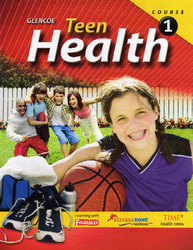
Teen Health Course 1Chapter 9: TobaccoStudent Web Activities - Teacher CenterLesson 1 Answers 1. Secondhand smoke is a combination of the smoke released from the burning end of a cigarette and the smoke that is exhaled by a smoker. 2. There are over 4,000 chemicals in secondhand smoke and more than 50 are known to cause cancer. 3. The disease/illnesses that secondhand smoke is associated with include:
4. Children's lungs are not fully developed so they are at greater risk from secondhand smoke. 5. An estimated 3,000 lung cancer deaths and more than 35,000 coronary heart disease deaths occur annually among adult nonsmokers in the United States . These deaths are a result of exposure to secondhand smoke Additional Resources for Teachers Below are some Web sites that offer additional information on secondhand smoke, including some that have great anti-smoking visual campaigns. It would be fun to have students try and design a whole ad campaign (online and print ads, buttons, bumper stickers, letters to editors, posters, brochures, talks to give at school, etc.) to educate teens on the dangers of smoking and secondhand smoke.
Lesson 3 Answers 1. About 3,000 kids start smoking every day. 2. Some of the health problems that can develop as soon as a person starts smoking include:
3. Kids who smoke are three times more likely to use alcohol, eight times more likely to smoke marijuana, and 22 times more likely to use cocaine. 4. It is difficult to stop smoking because the nicotine in tobacco is addictive. 5. People who are trying to quit smoking often experience anger, anxiety, difficulty concentrating, restlessness, and decreased heart rates. Additional Resources for Teachers Below are some Web sites that offer additional information on smoking, including a quiz and a smokers' help line. Try having student role play a smoking hotline in which one teen calls asking for help and the other answers the questions. Encourage students to come up with a wide variety of questions including how to stop smoking, how to encourage others to stop, and how to deal with secondhand smoke.
|  |















